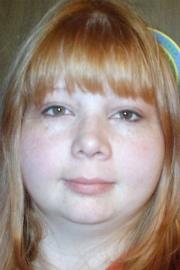Medical Assistant vs. Polysomnography Technician: What You Need to Know
We don’t hear too much about polysomnography technicians (PLTs) — probably because most of us were asleep while these people worked around, near or over us. In fact, if you ever participated in a sleep study (perhaps to find out if you have sleep apnea or other sleep-related ailments), you received the services of a PLT.
Polysomnography techs work mostly in sleep study clinics or settings but they can also work for hospitals, clinics and research facilities. These individuals specialize in applying, monitoring and gathering the results of equipment and tools that measure what happens to people while asleep. As such, PLTs may administer EKGs, EEGs and other electrical signal imparting tests.
The American Academy of Sleep Medicine stresses that there is a difference between a polysomnographic technician and technologist, the latter being of higher rank, but for the purpose of this document, all 3 levels (including “assistants,” which are below the other two) are coalesced into one. Actually, most of the jobs in healthcare can involve levels or ranks that distinguish people according to technologist, technician, assistant and aide, generally in that order.
Here are some of the major differences between Polysomnographic Technician and MAs:
- PLTs are restricted to sleep study labs, clinics or rooms; unlike MAs, they aren’t assigned to different jobs or responsibilities on a daily basis — in other words the former is much more hum-drum (if we may call it that), run-of-the-mill and monotonous; MAs that like the rich variety of duties they perform daily might not enjoy such a special-duties restricted position.
- PLTs don’t interact with patients much, except for brief periods to give instructions and answer basic questions — MAs that like patient interaction might also find this a deficiency.
- PLTs answer to few people; as such, they are more independent than MAs.
- The job market for PLTs is more restrictive and specialized than an MA’s; how much growth for these professionals depends on how many more sleep study centers/labs are in the plans or needed. Considering the poor state of the economy, it’s not likely that more construction is in the works right now for these kinds of facilities.
- It’s fair to say that it would be easier for an MA to move into the shoes of PLT than it would be for a PLT to move into the shoes of an MA. Unfortunately, though an MA will have to complete a polysomonography technician training program in order to qualify for this position.
- Most of the skills and knowledge accumulated by MAs can come in handy if considering becoming a PLT, especially if blood samples are needed, medications have to be administered, emergency aid has to be provided to the patient in case of trouble during the night, etc.
- Some MAs will find the merely monitoring patients during the night part of their job sort of boring — this is something to consider.
- In doing this job you also don’t get to see the fruits of your labor much since patients participating in sleep study sessions leave, never to come back; the point is that there is no on-going contact such as you might have with other patients admitted to a hospital for a week or more.
- Since PLTs make about $50K a year, MAs would be earning more by entering this profession, though the given figure is probably for experienced PLTs who have been on the job for a while.

